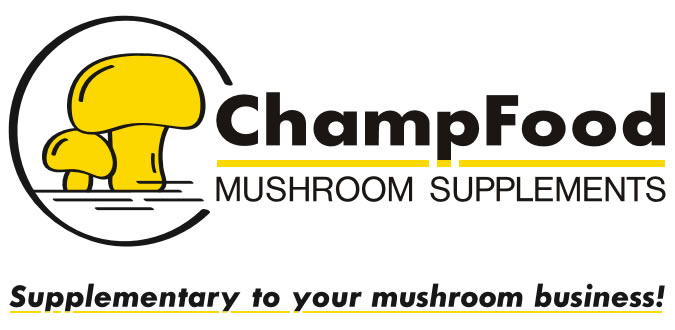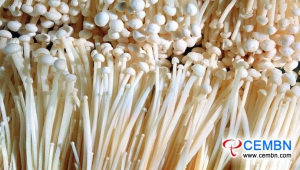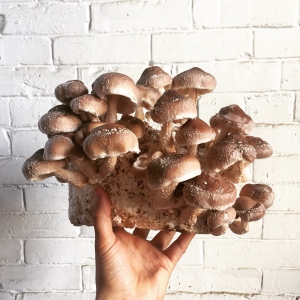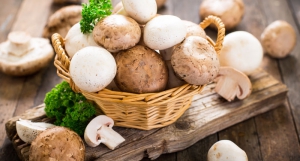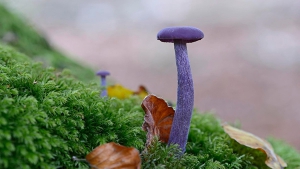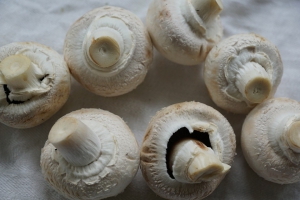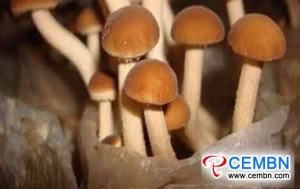
Mushroom Matter
Welcome on our platform. Why MUSHROOM MATTER? Because mushrooms play an important role in our lives as well in business. Our goal is to bring the world the very latest mushroom news with the upmost care to support the positioning of our beloved Mushroom.
According to mushroom quotation provided by Shandong Kuangshan Agricultural Products Transaction Market, on January 15, White beech mushroom, Brown Shimeji mushroom and Cordyceps militaris are 3 varieties that show price fall.
1. Price of White beech mushroom has dropped from 16.7 to 15.8 CNY per kg, indicating 5% of decline range.
2. Price of Brown Shimeji mushroom has dropped from 18.3 to 17.5 CNY per kg, indicating 4% of decline range.
3. Price of Cordyceps militaris has dropped from 24 to 20 CNY per kg, indicating 17% of decline range.
On the contrary, on January 15, Enoki mushroom, Seafood mushroom, Superior Shiitake mushroom and Button mushroom are 4 varieties that show price rise.
1. Price of Enoki mushroom has risen from 8 to 8.5 CNY per kg, indicating 6% of increase range.
2. Price of Seafood mushroom has risen from 9.8 to 10.7 CNY per kg, indicating 9% of increase range.
3. Price of Superior Shiitake mushroom has risen from 13 to 13.6 CNY per kg, indicating 5% of increase range.
4. Price of Button mushroom has risen from 12 to 13 CNY per kg, indicating 8% of increase range.
“Price of King oyster mushroom, Agrocybe cylindracea, Shiitake mushroom, Oyster mushroom and Pleurotus geesteranus is respectively at 7.5 CNY, 14 CNY, 9 CNY, 5 CNY and 9 CNY per kg. As Chinese New Year approaches, price of mushroom is possible to rise at a small range in our market,” introduces manager of Shandong Kuangshan Agricultural Products Transaction Market passionately.
Researchers from Tohoku University suggest that consuming mushrooms on a regular basis reduces the risk of prostate cancer in men - especially those aged 50 or older.
It’s a love or hate ingredient, but a new study has revealed a link between eating mushrooms and lower risk of prostate cancer. Researchers from Tohoku University suggest that consuming mushrooms on a regular basis reduces the risk of prostate cancer in men - especially those aged 50 or older. Dr Shu Zhang, who led the study, said: "Test-tube studies and studies conducted on living organisms have shown that mushrooms have the potential to prevent prostate cancer. "However, the relationship between mushroom consumption and incident prostate cancer in humans has never been investigated before. "To the best of our knowledge, this is the first cohort study indicating the prostate cancer-preventive potential of mushrooms at a population level.”
In the study, the researchers surveyed 36,499 men about their lifestyle choices including food consumption, psychical activity and smoking and drinking habits, and analysed their medical records. The results revealed that overall, 3.3% of the participants developed prostate cancer during a follow-up period. However, participants who ate mushrooms once or twice a week had an 8% lower risk of developing the disease, compared to those who ate mushrooms less than once a week. Meanwhile, men who ate mushrooms more than three times a week had a 17% lower risk.
Source: Shivali Best, Mirror online
JM Farms Announces New Affiliation With Giorgi Mushroom Co. and Grupo Monteblanco Mb, S.A. De C.V.
Miami, OK — J-M Farms, LLC is pleased to announce a new affiliation with Giorgi Mushroom Company and Grupo Monteblanco. They have purchased a minority interest in J-M Farms, LLC, and will be a partner in J-M Farms’ previously-announced modernization of its Miami, OK facilities. The modernization project recently broke ground on December 18, 2019.
“We could not be happier to have both Giorgi Mushroom and Grupo Monteblanco as partners in this project” stated Curtis Jurgensmeyer, President, J-M Farms. “Demand for fresh mushrooms continues to grow and this project will allow us to continue to serve our customers’ increasing need for quality fresh mushrooms.”
“We are very honored to partner with J-M on it’s modernization project. Like our companies, J-M is family-owned with values that are closely aligned with our own,” said Joe Caldwell, President, Giorgi Mushrooms Co, and Alfonso Cano, President, Grupo Monteblanco. “We look forward to working with the J-M team, which has a long, successful history and we look forward to supporting the Miami, Oklahoma community with this expansion.”
# # #
About J-M Farms, Inc.
J-M Farms, Inc. is a family-owned business that packs under the J-M Fresh label. It’s fleet of trucks deliver product to Oklahoma, Texas, Arkansas, Mississippi, New Mexico, Kansas, Missouri and Iowa.
About Giorgi Mushroom Company
Giorgi Mushroom Company is a family owned and operated agribusiness in Berks County, PA, and is one of the largest, single-location mushroom producers in the world.
Source: Perishable News / American Mushroom Institute
The world of fungi is wonderful, weird and wild thanks to its rich palette of colors, strange shapes and infinite textures. Contrary to what you've been told, not all colorful mushrooms are deadly, like the red fly agaric. Below are two violet mushrooms that are edible and one beautiful blue mushroom that nobody dares to consume.
Photo above is of an Amethyst Deceiver (Laccaria amethystina)
The amethyst deceiver has a bright lilac color. Its cap and stem become paler and almost white in dry environments or as the mushroom grows older, making it hard to recognize. Thus, the name "deceiver". The violet mushroom can be found in leaf litter of coniferous and deciduous woodland during late summer and autumn. Though people often think that colorful mushrooms are toxic, the amethyst deceiver is edible.
Read the full article and about more edible mushrooms on the webiste of GGTN.
UNIVERSITY PARK, Pa. — Mushrooms contain unusually high amounts of two antioxidants that some scientists suggest could help fight aging and bolster health, according to a team of Penn State researchers.
In a study, researchers found that mushrooms have high amounts of ergothioneine and glutathione, both important antioxidants, said Robert Beelman, professor emeritus of food science and director of the Penn State Center for Plant and Mushroom Products for Health. He added that the researchers also found that the amounts of the two compounds varied greatly between mushroom species.
"What we found is that, without a doubt, mushrooms are the highest dietary source of these two antioxidants taken together, and that some types are really packed with both of them," said Beelman.
Beelman said that when the body uses food to produce energy, it also causes oxidative stress because some free radicals are produced. Free radicals are oxygen atoms with unpaired electrons that cause damage to cells, proteins and even DNA as these highly reactive atoms travel through the body seeking to pair up with other electrons.
Replenishing antioxidants in the body, then, may help protect against this oxidative stress.
"There's a theory — the free radical theory of aging — that's been around for a long time that says when we oxidize our food to produce energy there's a number of free radicals that are produced that are side products of that action and many of these are quite toxic," said Beelman. "The body has mechanisms to control most of them, including ergothioneine and glutathione, but eventually enough accrue to cause damage, which has been associated with many of the diseases of aging, like cancer, coronary heart disease and Alzheimer's."
According to the researchers, who report their findings in a recent issue of Food Chemistry, the amounts of ergothioneine and glutathione in mushrooms vary by species with the porcini species, a wild variety, containing the highest amount of the two compounds among the 13 species tested.
"We found that the porcini has the highest, by far, of any we tested," said Beelman. "This species is really popular in Italy where searching for it has become a national pastime."
The more common mushroom types, like the white button, had less of the antioxidants, but had higher amounts than most other foods, Beelman said.
The amount of ergothioneine and glutathione also appear to be correlated in mushrooms, the researchers said. Mushrooms that are high in glutathione are also high in ergothioneine, for example.
Cooking mushrooms does not seem to significantly affect the compounds, Beelman said.
"Ergothioneine is very heat stable," said Beelman.
Beelman said that future research may look at any role that ergothioneine and glutathione have in decreasing the likelihood of neurodegenerative diseases, such as Parkinson's disease and Alzheimer's disease.
"It's preliminary, but you can see that countries that have more ergothioneine in their diets, countries like France and Italy, also have lower incidences of neurodegenerative diseases, while people in countries like the United States, which has low amounts of ergothioneine in the diet, have a higher probability of diseases like Parkinson's Disease and Alzheimer's," said Beelman. "Now, whether that's just a correlation or causative, we don't know. But, it's something to look into, especially because the difference between the countries with low rates of neurodegenerative diseases is about 3 milligrams per day, which is about five button mushrooms each day."
Beelman worked with Michael D. Kalaras, postdoctoral assistant in food sciences; John P. Richie, professor of public health sciences and pharmacology; and Ana Calcagnotto, research assistant in public health sciences.
Source: PennState
To rise the biological conversion rate of Agrocybe cylindracea, what should growers do?
Low biological conversion rate of Agrocybe cylindracea holds a certain relationship with special environmental requirement during the growth phase. Apart from selecting superior variety, growers should also pay attention to the following key points:
1. Agrocybe cylindracea is categorized into wood-rotting fungi, but it has poor ability on utilization of Lignin. Agrocybe cylindracea owns strong activity of protease, and it has significant ability on utilization of protein. Hence, increasing the ratio of organic nitrogen in compost is helpful to lift the output of Agrocybe cylindracea.
2. During the formation phase of sporocarps, high environmental humidity is required (100%), after the fruiting, it could be reduced to 80%, which is good for the growth of sporocarps.
3. During the fruiting phase of Agrocybe cylindracea, relatively-high concentration of carbon dioxide is needed, and it is conductive to the extension of mushroom stem and a higher output. Accordingly, during the phase, be sure to reduce the ventilation so as to raise the concentration of carbon dioxide.
4. Sporocarps of Agrocybe cylindracea hold phototaxis, thus certain scattered light is required during the formation phase of sporocarps.
This cutting-edge psychedelic tech company with its roots in innovative cannabis treatment modalities has developed a patent-pending nasal spray for microdosing psilocybin --and users love it.
Silo Wellness, an Oregon company with a team with roots in cannabis delivery modalities, has developed a magic mushroom nasal spray for controlled, metered-dosing consumer microdosing. The company predicts that new users will be more drawn to experimenting with psilocybin’s wellness effects with convenient microdosing before they commit to the full-blow psychedelic “trip” sessions.
“I love our product and can’t wait until it’s legal in the United States, so we can share it with crime victims and first responders,” Silo Wellness founder Mike Arnold said. After formulating the product in Jamaica (where mushrooms are legal) with a team led by Missouri pharmacologist Parag Bhatt and company COO and Marine combat veteran Scott Slay, team members first tested the product on themselves before taking volunteers’ testimonials in private microdosing sessions.
The “Origin Story” of Silo Wellness and their Metered-Dosing Solutions
The visionary inventors of Silo Wellness’s first product to be publicly disclosed under their intellectual property have been working on this project since “before it was cool.” “National media didn’t care about psychedelics until Denver passed their decriminalization ballot measure,” Arnold stated. “Before that, everyone thought I was crazy when I told them that we were entering the medicinal psychedelics space in advance of Oregon legalizing in 2020.”
Silo Wellness founder Mike Arnold made headlines when he exited the practice of law to ultimately grow 40,000 marijuana plants in Oregon in 2017. “I had been hobby farming livestock for years. Since I was a kid, I always dreamt of farming fulltime. I just couldn’t pass up the cannabis opportunity when it presented itself. But I never thought I would exit cannabis and pivot full time into psychedelics, but they changed my life. I want to share this medicine with the world by making it affordable and comfortable for all.”
Arnold was a high-profile criminal defense attorney from Oregon before retiring to start his farms. He made national headlines for his part in stopping the armed Malheur Refuge Occupation led by his then-client Ammon Bundy. He was also featured in in two episodes of 48 Hours and successfully defended a marine sniper’s road-rage shooting murder case for which he wrote a well-reviewed book on self-defense in the criminal justice system that was banned in Oregon prisons.
The “Shroom Boom” is the “New Cannabis Green Rush” and the Peer-Reviewed Studies Are Even Stronger than Marijuana
With ROI reducing in cannabis startups in Canada and the United States, Arnold watched investors and hopeful entrepreneurs in his home state of Missouri still blindly running full speed to the new Missouri medical marijuana market, as it was gearing up to pass in 2018. “While everyone else saw the excitement for Missouri cannabis as a good sign for an investment, I saw it as the death nail. When everyone is running in one direction, that’s the last place an entrepreneur or investor wants to be. If you were on time for cannabis, you were already too late.”
That’s why Arnold began working with the inventor of the patent-pending Mystabis hemp and marijuana inhalers, Michael Hartman, to begin the brainstorming for their newest product line of metered-dosing solutions.
“I came a little late to the magic mushroom space as a user,” Arnold continued. “I had no information about the medicinal benefits for PTSD and anxiety until I met a doctor while traveling in the spring of 2018 who blew my mind with the research and offered to take me on a guided meditation with mushrooms right there on the spot. I told him I was terrified to use them. ‘How do you know how much you are ingesting? What if I take too much?’ I asked.”
“He replied, ‘Mike, you know me; I’m a doctor.’ Enough said,” Arnold recalls. “I trusted him and it changed my life. Mushrooms have been life-changing and I want to share this healing opportunity with the world with a purpose-driven company mindful of consumer access to these gifts of nature.”


